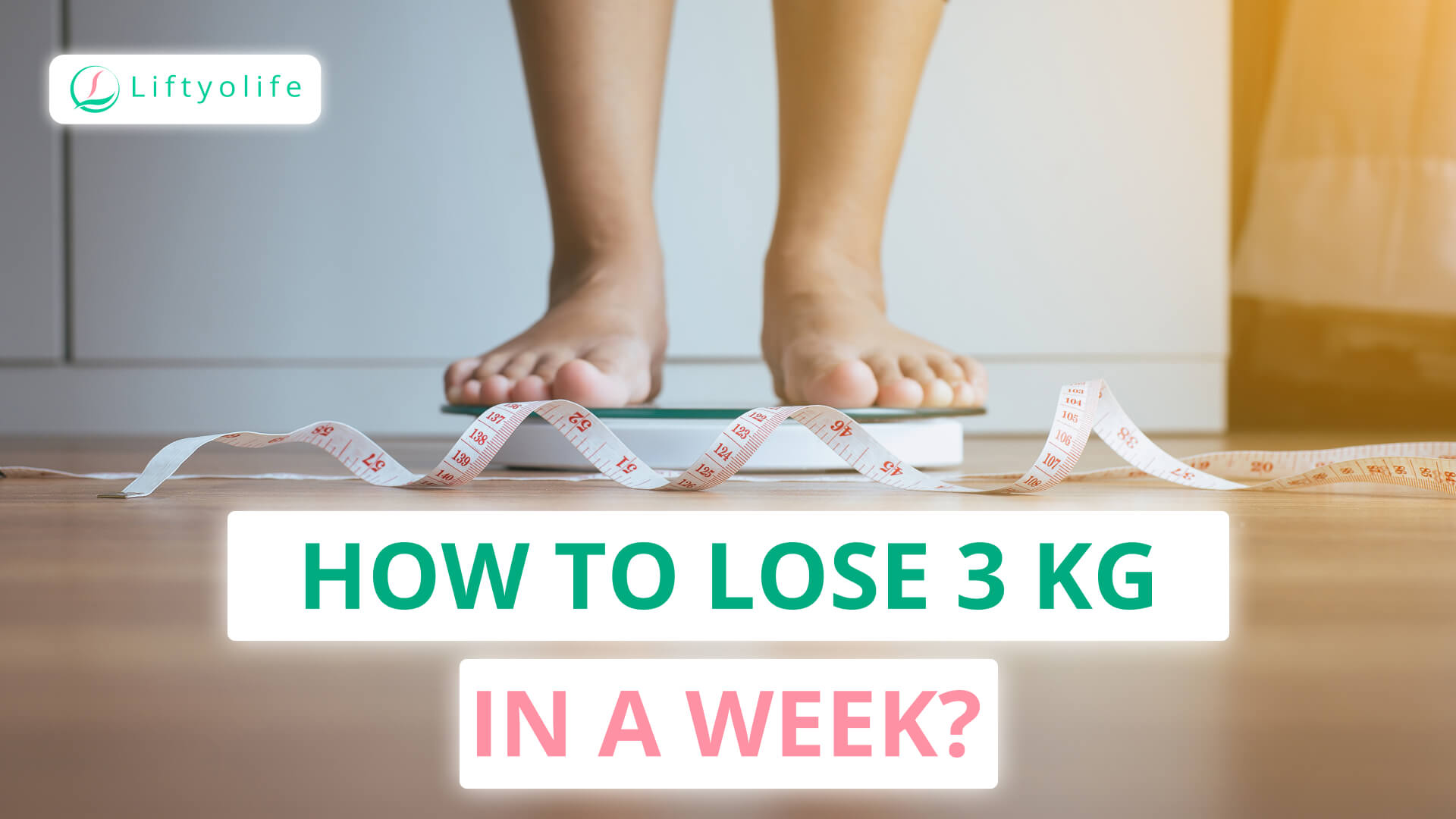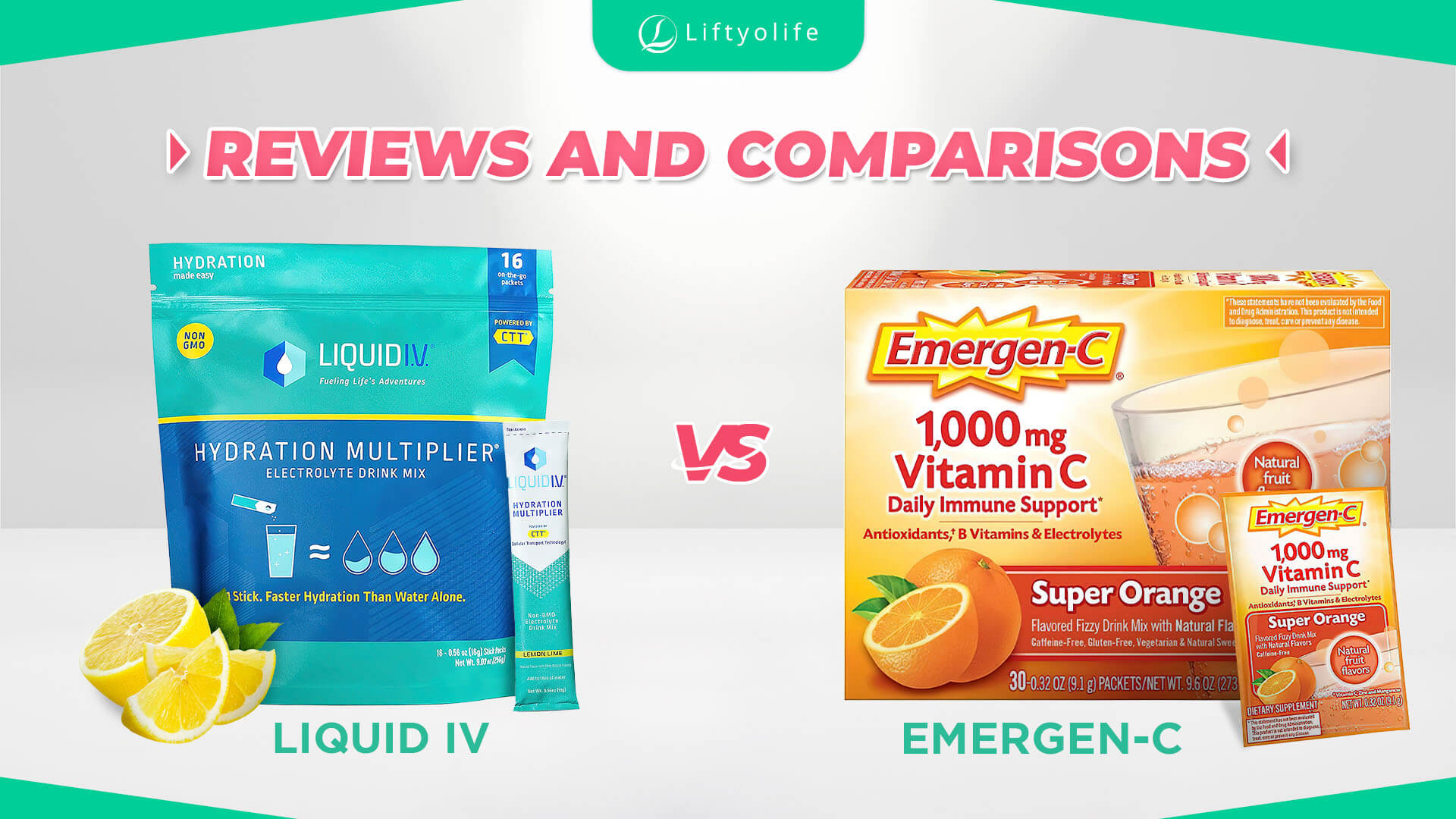How To Lose 50 Pounds In 6 Months?
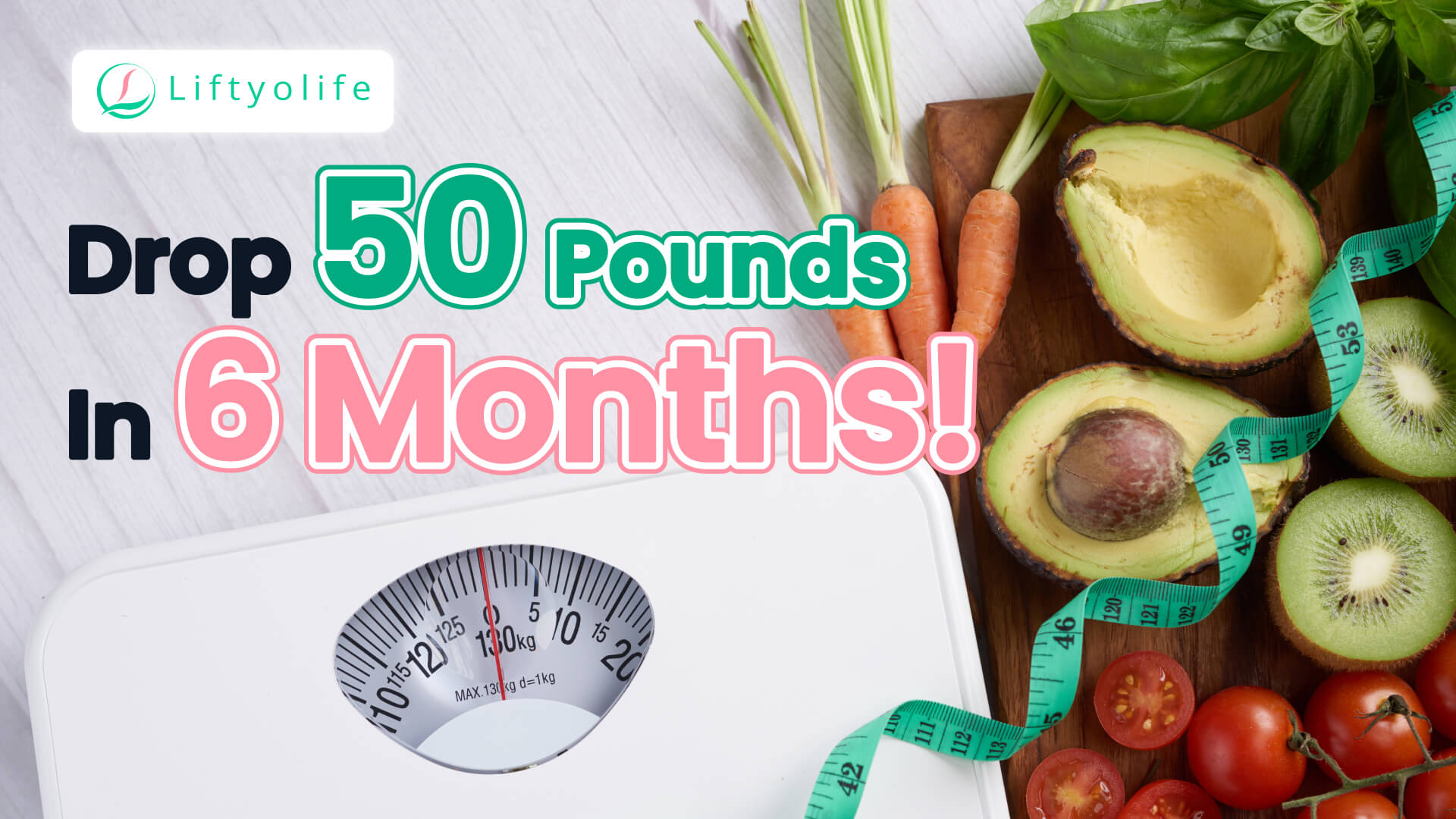
Have you gained more than 50 pounds and want to lose them quickly? The fact that losing weight does not happen overnight, but it is possible if you have strong motivation and enough time. Liftyolife will teach you how to lose 50 pounds in 6 months. Are you prepared to work out? Let’s get started right away.
1. Can you lose 50 pounds in 6 months?
To lose 2 pounds per week, you must burn 7000 calories. When broken down into daily amounts, you’ll need to burn off an extra 1000 calories per day. You can cut down 500 calories from your diet. Getting rid of 1000 calories will necessitate reducing your calorie intake to eliminate some calories and working out to burn off the remaining calories. It is appropriate to combine the two approaches because it allows you to consume no less than 1200 calories per day.
If you can lose 2 pounds per week, that translates to 8 pounds per month and 48 pounds in 6 months, roughly the 50 pounds you want to lose. As a result, if you have enough determination, perseverance, and a smart strategy, you can lose 50 pounds in 6 months. However, whether it is safe to lose so much weight in such a short time is another question. Losing too many pounds in a short time is not recommended because it’s associated with many complications such as the formation of kidney stones, severe dehydration, malnutrition, nausea, mental fatigue, muscle weakness, etc.
Although it’s possible to lose 50 pounds in six months, the National Institute of Health advises setting achievable and realistic weight loss goals. Given the National Institute of Health, you should lose 5% to 10% of your current body weight over six months.
2. How to lose 50 pounds in 6 months?
To lose 50 pounds in 6 months, you need to set weekly loss goals, calculate your calorie intake, choose the best diet, work out properly, etc.
2.1. Set weekly weight loss goals
It will be difficult and frustrating if you focus on losing 50 pounds. So divide 50 pounds into smaller weekly goals that are easier to achieve. Set a weekly weight loss goal of 2 pounds. So, how do you get rid of these extra pounds? Two aspects below should be included in your goal statement:
- Reduce the number of calories you consume each day. How much is it?
- Work out and engage in physical activities frequently to burn more calories than usual. How much time do you spend on it?
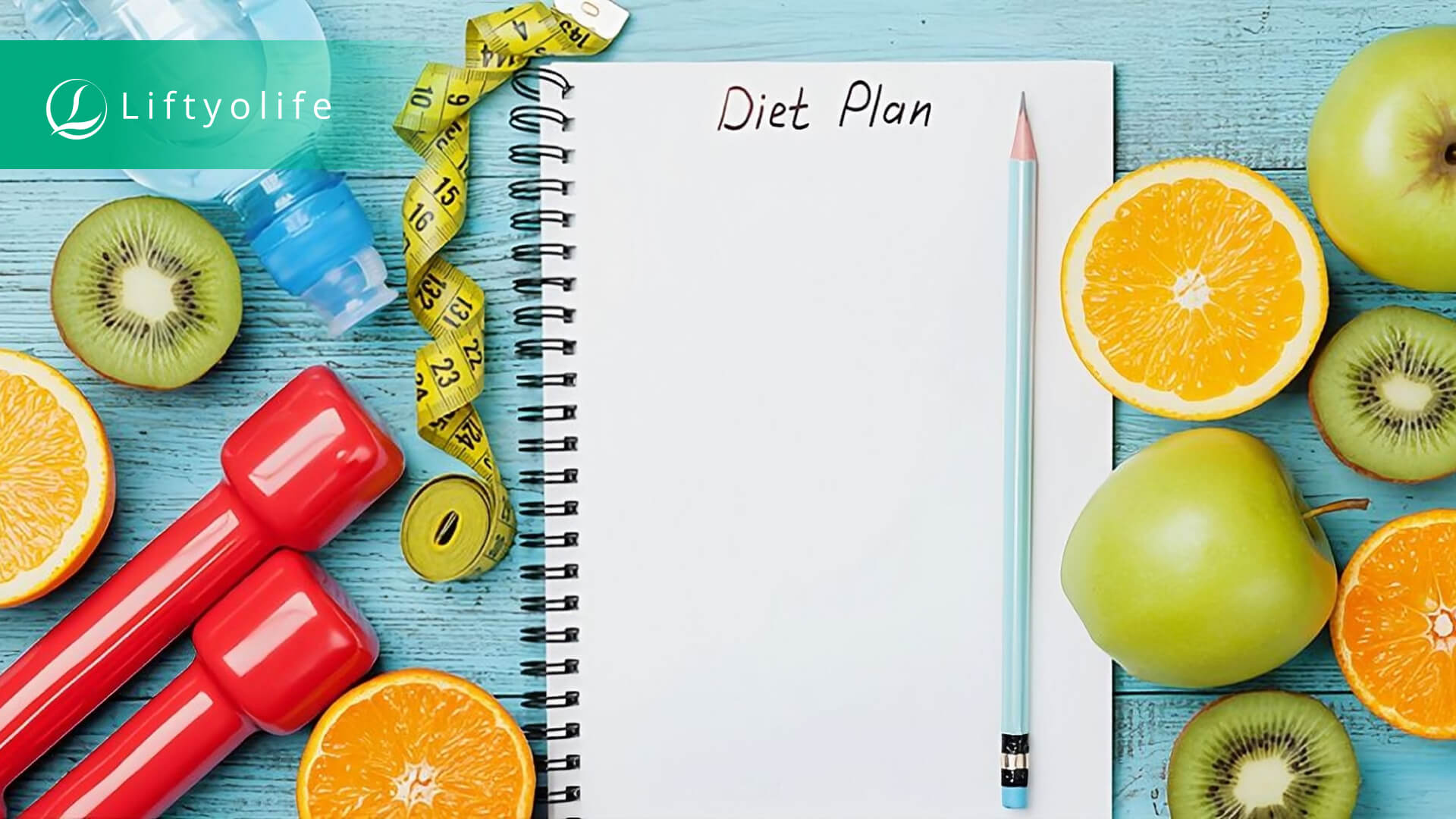
Set weekly weight loss goals
- steps,
- active minutes,
- meatless meals,
- incorporating more fruits and vegetables,
- reducing sugary beverage or alcohol intake,
- hours of sleep,
- other behaviors.
2.2. Avoid starvation at all times
Starving the body regularly or ongoing is never a good way to lose weight effectively. If you fast too long and too frequently, your body will burn muscle instead of fat, resulting in muscle loss and fat retention. Furthermore, losing weight should never be used as an excuse to starve yourself because it exposes your body to overall weakness and may leave you unable to perform daily activities and exercise. Your weight loss will be slowed as a result of this.
2.3. Building muscles
While all macronutrients are essential, protein is particularly important for muscle building. Your body will struggle to repair muscle tissues broken down during weight training if you do not consume enough protein. Moreover, studies show that a high-protein diet can aid fat loss and muscle gain. Furthermore, various exercises can be used to gain muscle. You can perform bodyweight exercises, lift weights, or do both.
2.4. Calculate your daily caloric needs
To lose one pound, you have to burn 3500 calories. Therefore, you should consume 300-500 fewer calories per day. Workouts and physical activities will also help you burn more calories. Use an online calorie calculator to get an accurate estimate of how many calories you should consume per day. For the calculator to produce results, you must enter your age, height, weight, gender, and level of physical activity.
2.5. Choosing the best diet for yourself
If you wonder “Can I lose 50 pounds in 6 months?”, we suggest the next tip – choosing the best diet for yourself to lose weight. Low-fat dairy products, fruit and vegetables, whole grains, lean protein sources, and nuts and seeds are part of a healthy diet.
A flexible budget allows for the occasional, reasonable indulgence. It should include foods available in your local grocery store and that you enjoy eating. You may need to consult a dietician or nutritionist to determine which diet is best. You can follow a plant-based diet, a low-fat diet, a low-carb diet, or any other diet that your doctor recommends. You may also choose a non-diet approach, which your dietitian can assist you with.
2.6. Drink lots of water
Water can be highly beneficial to weight loss. It has no calories, helps you burn more calories, and may even suppress your appetite if taken before meals. Replacing sweetened drinks like soda, lemonade, and sweet tea with water is almost a surefire way to lose weight quickly. For women, aim for at least 12 cups of fluid per day.

Drink lots of water
2.7. Eat non-starchy vegetables
Non-starchy vegetables typically have 10 to 40 calories per cup. Water and fiber make up a large portion of these veggies, which keep you full without adding calories. As a result, investing in these vegetables provides your body with more nutrients while consuming fewer calories. You should try eating various vegetables before meals to help your body meet its essential vitamin and mineral needs. Vegetables with few calories include:
- Lettuce,
- Spinach,
- Zucchini,
- Other leafy greens,
- Mushrooms,
- Tomatoes,
- Bell peppers,
- Cucumbers,
- Celery,
- Cauliflower,
- Broccoli,
- Asparagus,
To achieve your goal weight, choose a variety of vegetables to meet essential vitamin and mineral requirements, and fill half of each plate with non-starchy vegetables.
2.8. Eat unsaturated fats
Choosing the suitable types of fat can assist you in losing weight. Unsaturated fats (polyunsaturated fats and monounsaturated fats) are satiating, aid in the absorption of vital fat-soluble nutrients, and fight inflammation, which help in weight loss. Dietary fat is required by your body to function correctly, and this essential nutrient increases satiety during a 50-pound weight loss. Plant oils, fish oil, nuts, seeds, fatty fish, nut butter, olives, hummus, and avocados are all high in healthy fats, so include them in your weight loss meal plan.
2.9. Eating more fiber
Consuming approximately 30 grams of fiber a day can assist you in losing weight, lowering your blood pressure, and increasing your body’s insulin response as effectively as a more complicated diet. Fiber promotes satiety more quickly and for a longer time. It means you’ll feel fuller faster and for longer and eat less than you would otherwise.
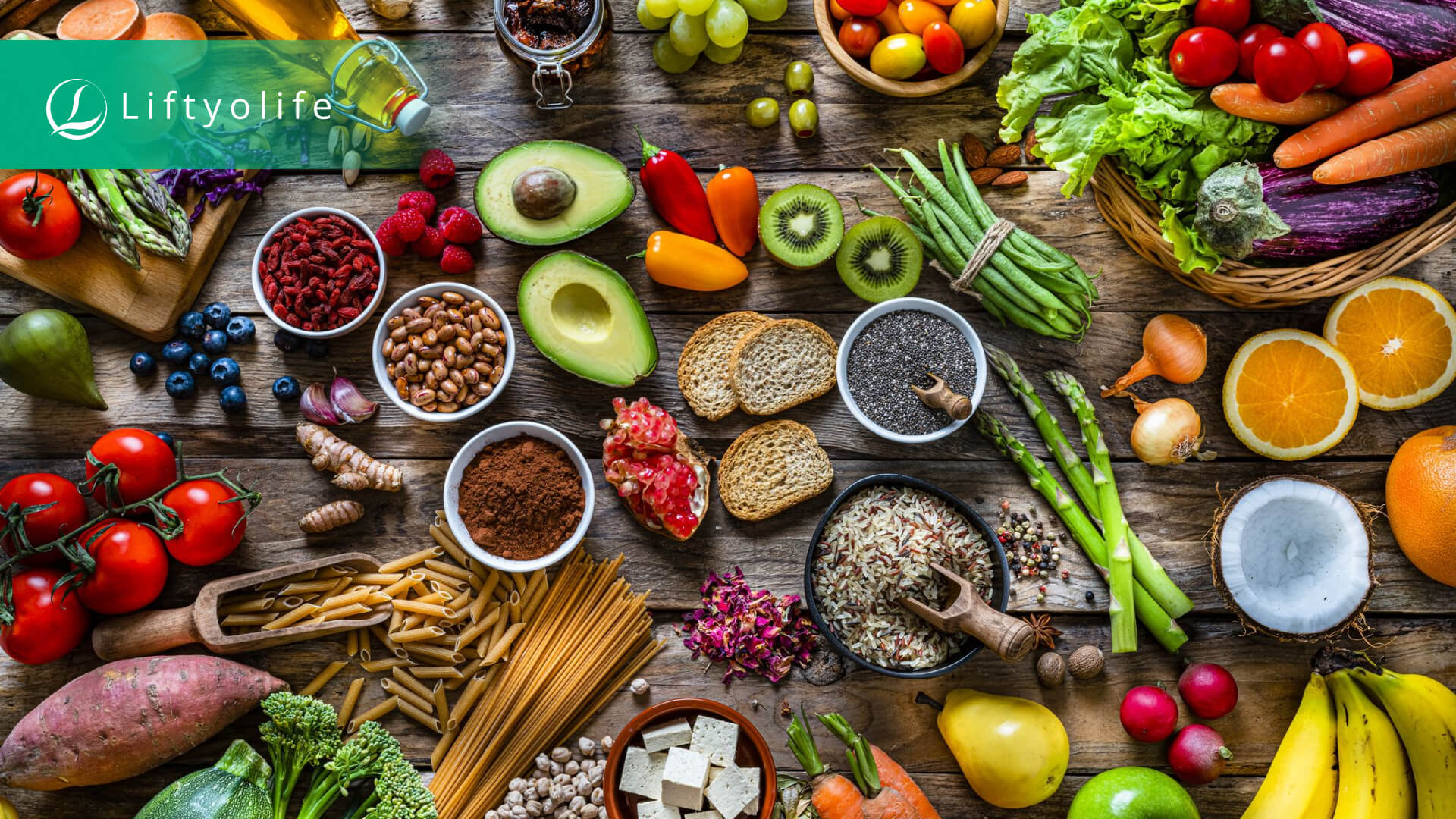
Eating more fiber
2.10. Eliminate certain carbohydrates
Avoid eating too many carbohydrates because they will be stored as excess fat and cause rapid weight gain if consumed in excess. Choose fiber-rich carbohydrates such as fruits, vegetables, legumes, whole grains, nuts, and seeds to meet daily carbohydrate needs. To lose weight successfully, avoid the following refined carbs:
- White bread,
- Sugary drinks,
- Crackers,
- Baked goods,
- Regular pasta,
- Sweets,
- White rice,
- Regular bagels,
- Breaded or fried foods,
- Chips,
- White tortillas,
2.11. Exercise and do physical activity
Exercising is beneficial to your health and aids in weight loss. When it comes to exercising for weight loss, cardiovascular exercises are recommended. Cardio workouts, when compared to other types of exercises, burn the most calories and will help you lose weight faster. Regular exercise is essential for increasing metabolism, which aids in weight and fat loss. To build muscle and lose weight, aim for at least 30-60 minutes of aerobic exercise per day, plus resistance training on most days of the week.
- Aerobic exercise: Weight loss should be aided by 150 to 300 minutes of aerobic exercise per week. Walking 5 miles per day (roughly 10,000 steps) will go a long way toward helping you meet your goal. Hiking or climbing in hilly areas may yield better results.
- Cardiovascular workouts: Cardiovascular exercises like jogging, swimming, and stair climbing typically burn the most calories.
- Strengthening exercises: Lifting free weights or doing body resistance workouts help you burn more calories and maintain muscle mass after a workout or while resting. At-home exercises that you can try include incline bodyweight squats, push-ups, jumping jacks, and lunges.
2.12. Increase protein
Protein foods such as grilled chicken, seafood, eggs, fish, tofu, and seitan should account for one-fourth of each plate. Dairy products and calcium-rich alternatives are also good sources of protein. Every day, consume about 2-3 servings of dairy foods or calcium-rich alternatives. Beans, peas, lentils, and other legumes are also high in protein, but they are classified as starches due to their high carbohydrate content. Aim for one-fourth of each plate to be filled with these or other starches (such as sweet potatoes and whole grains).
2.13. Not skipping meals
The body begins to produce more cortisol, leaving us stressed and irritable. Skipping meals can also cause your metabolism to slow down, leading to weight gain or making losing weight more difficult. Furthermore, when you skip a meal or go for an extended time without eating, your body goes into survival mode. When skipping meals, you are more likely to become hungry, and you eat more than you would have or are required to eat. This hinders your weight-loss efforts.
2.14. Record calorie intake
Keeping track of how many calories you consume each day will allow you to control them better and avoid overeating. More importantly, this gives you a good idea of whether you’re on track to lose weight.
2.15. Sleep more and de-stress
Stress and lack of sleep alter hormone levels in your body, increasing appetite and making it difficult to cut calories for a 50-pound weight loss. Sleeping more was associated with a daily calorie reduction of 270 calories. Some participants cut their intake by up to 500 calories per day. To improve sleep quality, go to bed simultaneously every night, sleep in a cool, dark room, avoid going to bed hungry or full, use a white noise machine when necessary, and avoid caffeine late in the day.

Sleep more and de-stress
2.16. Try a structured weight loss program
Because drastic weight loss can be challenging without structure or motivational support, organized weight loss plans are essential for losing 50 pounds in six months. Find a program that is right for you to guide you and inspire you throughout your journey.
3. Week diet plan to lose 50 pounds in 6 months
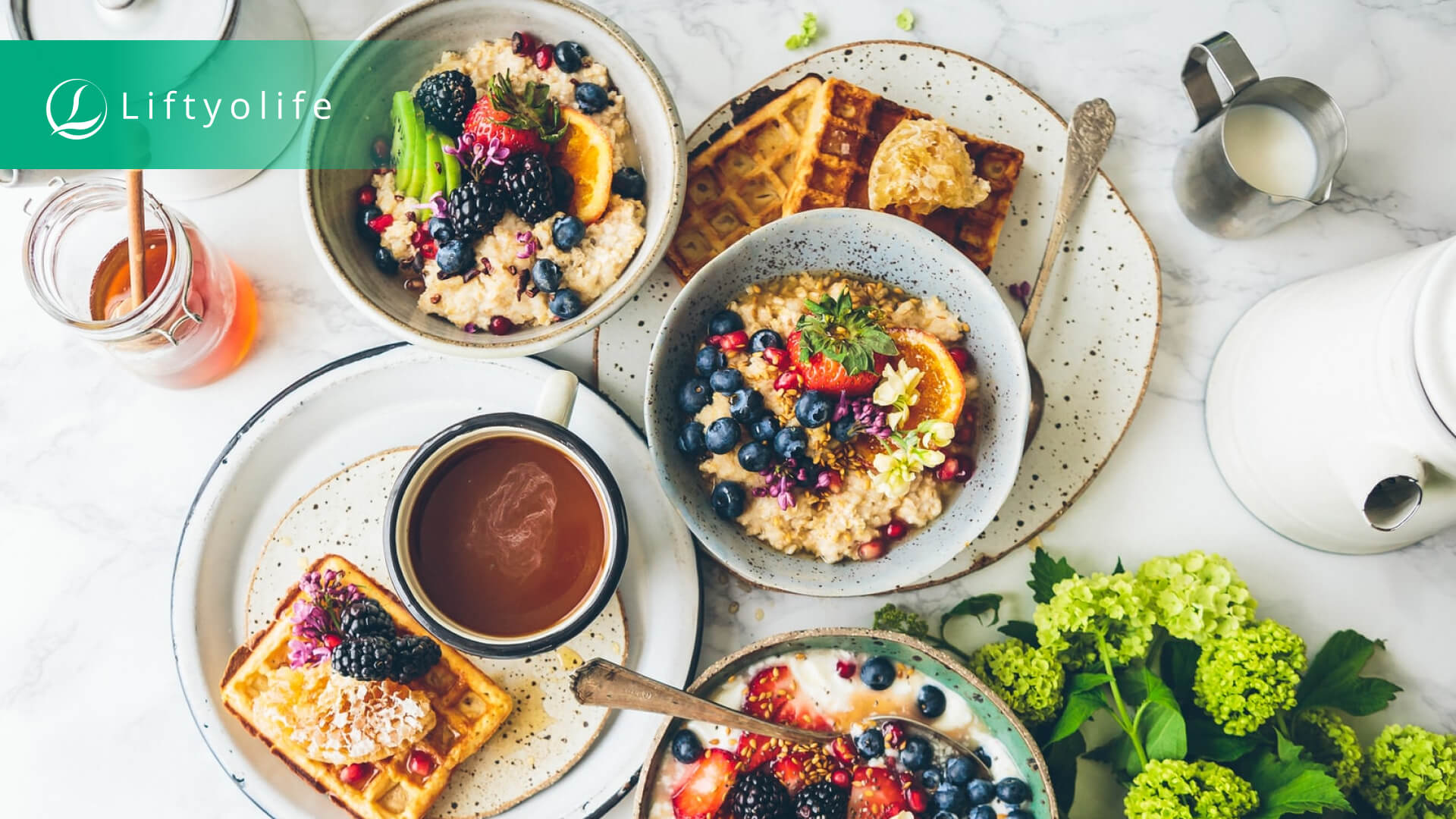
Week diet plan to lose 50 pounds in 6 months
3.1. Monday
- Breakfast: strawberry-mango smoothie with one tablespoon of chia seeds or ground flax seeds.
- Lunch: White tuna pita with a tablespoon of light mayonnaise and two tablespoons of dried cranberries.
- Dinner: Take 500 calories from a meal of your choice.
- Snack: Half a cup of cottage cheese, yogurt, or a slice of string cheese with one cup of your favorite fruits.
3.2. Tuesday
- Breakfast: Yogurt with one cup of blueberries, two tablespoons of sliced almonds, and one tablespoon of ground flaxseed.
- Lunch: A sandwich with bacon, lettuce and tomato, and one teaspoon of mayo.
- Dinner: Your meal should contain 85 grams of your choice protein and half a cup of your preferred grain.
- Snack: Half a cup of plain fat-free yogurt, a teaspoon of lemon zest, another teaspoon of honey, a dash of salt, fresh lemon juice, and curry powder.
3.3. Wednesday
- Breakfast: A bowl of yogurt with fruits and a quarter cup of granola.
- Lunch: Hummus wrap (chopped vegetables, hummus, and whole-wheat tortilla).
- Dinner: Fish or grilled chicken breast with some assorted grilled vegetables.
- Snack: An apple and a tablespoon of nut butter.
3.4. Thursday
- Breakfast: Caprese scramble with chopped tomato, a quarter cup of grated mozzarella cheese, and a pinch of salt.
- Lunch: Salad (400 calories): two kale servings.
- Dinner: Fish: a tuna or California roll.
- Snack: 170 grams of fat-free Greek yogurt.
3.5. Friday
- Breakfast: Mixed berry smoothie with a cup of plain low-fat yogurt.
- Lunch: Chicken salad pita
- Dinner: A vegetable burger. Accompany the burger with one cob of corn.
- Snack: Five cups of low-fat microwave popcorn and sprinkle some cheddar-flavored salt.
3.6. Saturday
- Breakfast: Open-faced peanut butter sandwich with a sliced peach.
- Lunch: A salad: two kale servings and a protein such as tofu cubes, beans, or diced chicken.
- Dinner: Shrimp with some zucchini pasta.
- Snack: Fruit salad with some non-fat yogurt.
3.7. Sunday
- Breakfast: Egg and vegetable scramble.
- Lunch: Turkey or vegetable burger with avocado with some diced avocado, tomato, lettuce and red onion.
- Dinner: Salmon with mixed greens.
- Snack: Half a cup of sorbet.
Have you made any notes on how to lose 50 pounds in 6 months? Liftyolife hopes these tips are helpful and work best for you. Remember that if you have a health condition, you should always seek your doctor’s advice before doing anything. Moreover, the most important thing to bear in mind is that your goal is attainable.
==> Read More:


